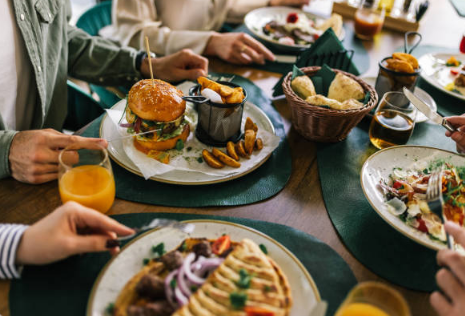Dewy skin is trendy, but there’s a big difference between a healthy glow and oily skin. While having oily skin is completely normal, excess oil production can cause more than just shine—it can lead to clogged pores, breakouts, and blemishes. And like many skincare issues, the root cause of excessive oil often starts from within. Your skin reflects your diet, and certain foods can trigger oil production, ultimately leading to acne.
You might have tried every salicylic acid serum on the market, but if your diet is fueling oil production, skincare alone won’t solve the problem.
1. Salt
We get it—this isn’t the news anyone wants to hear first. But when it comes to your skin, salt is one of the biggest culprits. Too much salt can lead to dehydration, bloating, puffiness, and under-eye bags. In response, your skin may try to compensate for the dehydration by producing more oil.
What to eat instead: Skip the added salt in meals. Look for low-sodium versions of staples like soups and beans.

2. Red Meat
Red meat can also contribute to that unwanted shine. Foods like sausage, beef, lamb, and bacon are high in saturated fat, which can increase skin inflammation. More inflammation means more oil production.
Try this instead: Swap out some of your red meat intake with poultry or fish to cut down on fat.
3. Meat Substitutes
That plant-based burger may not be as skin-friendly as it sounds. Many meat alternatives are made from highly processed soy byproducts, which can increase sebum (oil) production. Some even contain high levels of saturated fats.
What to eat instead: Opt for patties made from whole beans or legumes when you’re craving a burger.
4. Sugar
If salt is off the table, sugar must be fine… right? Not exactly. Studies show that high-sugar foods can boost the production of IGF-1 (insulin-like growth factor-1), a peptide hormone that triggers excess oil production.
Try this: Swap out sugary snacks for something like apple slices or oat crackers with avocado.
5. Refined Carbs
Refined carbohydrates like white bread, pasta, and rice can also spike IGF-1 levels. That spaghetti and meatballs combo? A double whammy for oily skin.
Try this instead: Choose whole grains, brown rice, or less processed carbs. Bonus: you might even lose some belly fat.
6. Dairy
Cheese lovers, brace yourselves: dairy can often trigger acne. While dairy has nutritional benefits, try cutting back on refined carbs first. Eliminate one potential trigger at a time to see how your skin responds.
Try this: Some research shows skim milk may cause more breakouts than whole milk due to higher IGF-1 levels. Surprisingly, full-fat milk might be the better option.

7. Alcohol
Alcohol is a natural diuretic, which means it dehydrates your skin. Dehydration, again, can cause your skin to overproduce oil.
What to drink instead: Go for alcohol-free options and stay hydrated before and after drinking.
8. Juice and Dried Fruit
Juices and dried fruits may seem healthier, but they’re packed with concentrated natural sugars—unlike whole fruits, which come with fiber. As mentioned earlier, high sugar intake can inflame your skin and increase oiliness.
Try this instead: Eat whole fruits for natural sweetness and pair them with a handful of nuts for added protein and healthy fats. For drinks, water is always best. For a twist, add fresh citrus juice or go for sparkling water.
9. Peanut Butter
This tasty spread is loaded with fats—especially omega-6 fatty acids, which have been linked to inflammation and acne flare-ups.
What to eat instead: Choose nuts or seeds that are high in omega-3s, which can actually reduce skin inflammation.
10. Fried Foods
You probably saw this one coming. Deep-fried fair favorites are some of the worst offenders for your skin. Saturated and trans fats promote inflammation, prompting your skin to produce more oil.
What to try instead: Cook with avocado or olive oil, or better yet, invest in an air fryer for crispy goodness without the grease.
11. Coffee
We hate to be the bearer of bad news, but that caffeine boost may not be doing your skin any favors. Caffeine can spike cortisol—your body’s stress hormone. Pair it with sugar, and you’ve got a recipe for trouble. High cortisol levels can overstimulate your oil glands.
Try this instead: Green tea has just enough caffeine to keep you going and offers anti-inflammatory benefits that support clear, balanced skin.
12. Soda
Nothing hits like an icy soda—until you realize what it does to your skin. Sugary drinks can spike IGF-1 levels, leading to increased oil production.
What to drink instead: Low-sugar sodas are a better option. Or try plain sparkling water if it’s the bubbles you crave.
Want healthy, glowing—not greasy—skin? Start by taking a closer look at what’s on your plate (and in your cup).